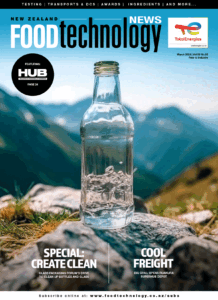
“Packaging materials such as paper, wrap around cases, carton and cardboard require bonding in a fast-paced environment,” says Graeme York, key account manager at Henkel New Zealand. “Ideally, these applications use hot melt adhesives, however, the application process tends to involve high temperatures (typically applied at 177°C) possibly causing health and safety hazard and resulting in high energy consumption.
“When overheated or left in the melter for extended periods of time, traditional hot melts are prone to degradation which can result in charred fragments causing plugged nozzles or pop opens during production. These problems undoubtedly increase downtime and costs which hurt the efficiency of manufacturing.”
Fortunately, says York, it is possible to choose low application temperature hot melts that help overcome those issues.
Adhesive manufacturer Henkel plays a role in reducing environmental impact, improving production efficiency and worker safety with its latest development Technomelt Cool hot melt adhesives which are applied at lower temperatures – “up to 40% less compared to conventional hot melts”.
This reduced application temperature maintains adhesive stability, prolongs equipment life, decreases maintenance costs and improves start-up times.
“Melting point is 38°C less than conventional hot melts, the Technomelt Cool drops below burn temperatures nine times faster and avoid potential burn hazards,” says York. They require less energy to melt and enable manufactures to reduce the brand owner’s carbon footprint along the lifecycle of the adhesive. At the same time, they are easy to apply and cure fast.
Sponsored content: For more information visit www.henkel-adhesives.com or email [email protected].


































































































